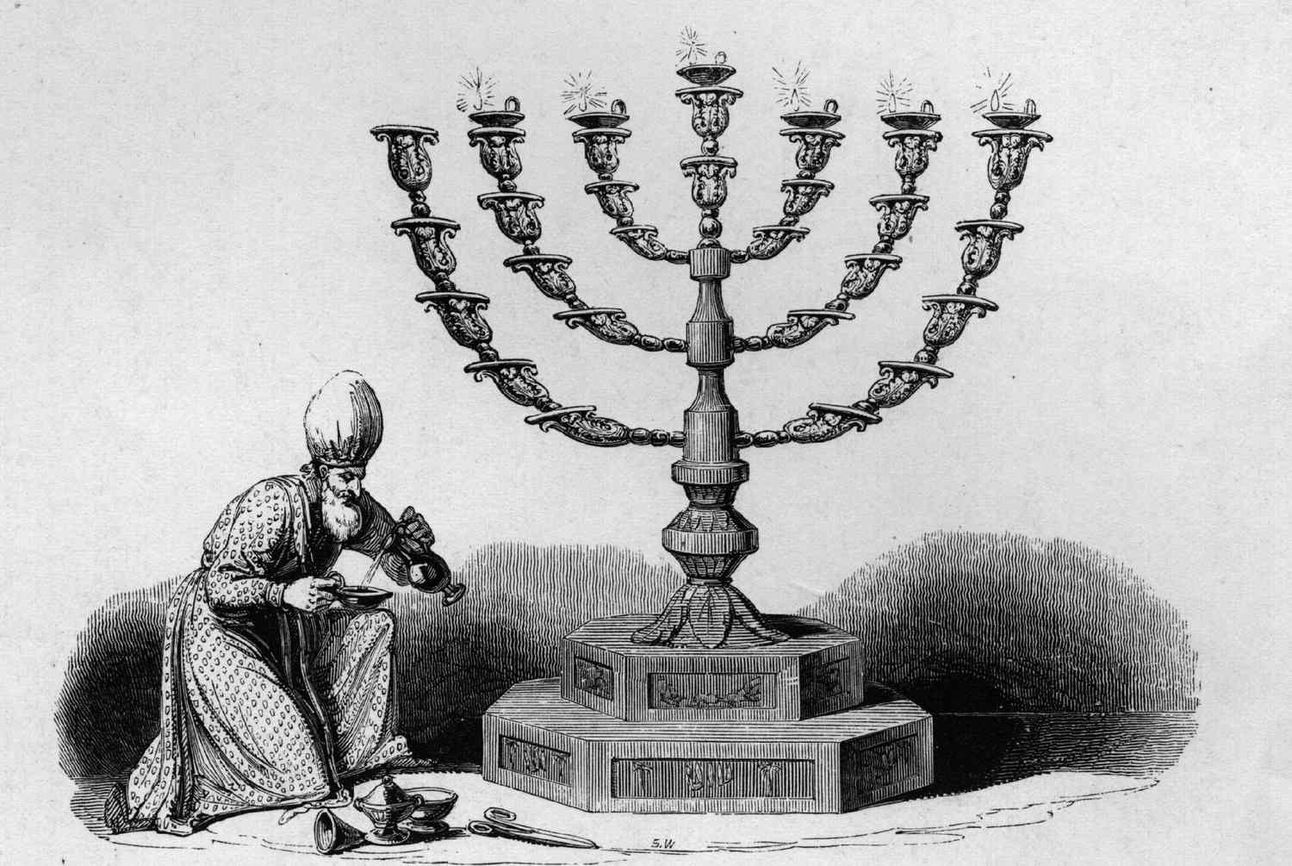- MHS
- Posts
- The End of the World
The End of the World
Revelation Series 1

Revelation 1
Background, Purpose, and Rules of Interpretation
A great deal of this teaching is influenced by Steven Armstrong's series on Revelation. Armstrong, who has now passed away, was the creator of Verse by Verse ministries, and his series provides a thorough study into the book of Revelation.
To use a metaphor from Steven Armstrong:
If you were to walk into a bookstore and open a book to the last chapter, what would you expect to understand? There might be several surprising things you read, but you will likely be left confused due to a lack of context that only comes from reading the entire book.
How then can you expect to dive into Revelation without a proper understanding of all that comes before it? Won't you just be left confused?
Rules of Interpretation
1. Scripture must be interpreted within its context.
We must Acknowledge the grammatical, historical, and cultural contexts that are at play in each book.
Some examples...
Ecclesiastes 10:2
“The heart of the wise inclines to the right, but the heart of the fool to the left.”
What if I were to say this verse is a commentary on American politics?
Ecclesiastes 10:19
“A feast is made for laughter, wine makes life merry, and money is the answer for everything.”
If we know Scripture, should we understand this statement to be true?
2. Let Scripture interpret Scripture.
An example...
Revelation 1:12-16
“I turned around to see the voice that was speaking to me. And when I turned I saw seven golden lampstands, and among the lampstands was someone like a son of man, dressed in a robe reaching down to his feet and with a golden sash around his chest. The hair on his head was white like wool, as white as snow, and his eyes were like blazing fire. His feet were like bronze glowing in a furnace, and his voice was like the sound of rushing waters. In his right hand he held seven stars, and coming out of his mouth was a sharp, double-edged sword.”
When we read this we think what do the lamp stands mean? Why are their seven of them? Why are there seven stars?
Well Jesus tells us exactly what they mean...
Revelation 1:20
"The mystery of the seven stars that you saw in my right hand and of the seven golden lampstands is this: The seven stars are the angels of the seven churches, and the seven lampstands are the seven churches."
Often times we try to draw out our own meaning of Scripture, but if we just go a bit forwards or backwards, we will likely find the answer to our question. We will see this a ton in Revelation.
Now when we think of a lamp stand what do we typically think of?

We might think of something like this right?
In the context of Scripture, this is not the picture we see.

The only picture we receive from Scripture of what a lamp stand is is what is described here.
And if John (inspired by the Holy Spirit) is writing this, since he is Jewish, this is probably his frame of reference for what he is describing what he is seeing.
3. Words should mean what they mean, unless there is evidence otherwise.
Sometimes we get caught up in the deeper meaning of a passage when it is plain as can be.
Some examples...
Romans 10:9
“If you declare with your mouth, “Jesus is Lord,” and believe in your heart that God raised him from the dead, you will be saved.”
What if I were to read this but argue that when it says "God raised him from the dead" it actually means a Spiritual raising not a physical one.
On the other side...
John 6:51
"I am the living bread that came down from heaven. Whoever eats this bread will live forever. This bread is my flesh, which I will give for the life of the world.”
Was Jesus made out of bread?
We need to be careful not to over-interpret a passage, but also to recognize when figurative language is being used.
4. Our God is not a God of confusion.
There is no "secret knowledge" to Scripture.
We do not need to go through rituals to understand the scriptures.
We do not need to make sacrifices, cast spells, or physically alter ourselves to understand God's Word.
Does this mean Scripture isn't confusing?
No, it definitely can be. But the answers we need are always there and God has given them to us freely. We just have to be willing to search for them.
Need is an important piece, because there are just some questions we do not need answered.
And the search we also have a helper in the Holy Spirit who illuminates the Word to us and teaches us as it says in John 14:26.
This will be all the more important to understand as we dive into Revelation.
And now having established these rules, lets begin in Revelation 1.
Background & Purpose of Revelation
Revelation 1:1-4
"The revelation from Jesus Christ, which God gave him to show his servants what must soon take place. He made it known by sending his angel to his servant John, who testifies to everything he saw—that is, the word of God and the testimony of Jesus Christ. Blessed is the one who reads aloud the words of this prophecy, and blessed are those who hear it and take to heart what is written in it, because the time is near. John, To the seven churches in the province of Asia:... "
In these four verses we are revealed several important points:
This entire book is given by Jesus Christ.
It is written for God's servants. (It is written as an encouragement).
Those who read and hear the words of this book are blessed.
This Revelation has been given to John.
John is writing this letter to seven churches in Asia
Specifically, these churches were in what is modern day Turkey
Now who is John here?
Go down a bit further to verse 9...
Revelation 1:9-10
"I, John, your brother and companion in the suffering and kingdom and patient endurance that are ours in Jesus, was on the island of Patmos because of the word of God and the testimony of Jesus. On the Lord’s Day I was in the Spirit, and I heard behind me a loud voice like a trumpet, which said: “Write on a scroll what you see and send it to the seven churches: to Ephesus, Smyrna, Pergamum, Thyatira, Sardis, Philadelphia and Laodicea.”
Here we are told:
John is on the island of Patmos.
He has been commanded to write this vision down and send it to seven churches in Ephesus.
Are we given anymore clarification on who this John is?
Not a ton, but we do know that Patmos was a island off the shore of Ephesus for exiled prisoners.
Many early church historians claimed John was sent to the island by the Roman Emperor at the time.
It also would make sense if John was known not only by those churches, but as one of the 12 disciples of Jesus, he would not need to add any more introduction.
So who is this loud voice he hears?
Jesus's Appearance and His Introduction
Revelation 1:12-16
“I turned around to see the voice that was speaking to me. And when I turned I saw seven golden lampstands, and among the lampstands was someone like a son of man, dressed in a robe reaching down to his feet and with a golden sash around his chest. The hair on his head was white like wool, as white as snow, and his eyes were like blazing fire. His feet were like bronze glowing in a furnace, and his voice was like the sound of rushing waters. In his right hand he held seven stars, and coming out of his mouth was a sharp, double-edged sword. His face was like the sun shining in all its brilliance.”
Couple things:
Here we see those lampstands from earlier.
We also see "someone like the son of man"; lets not read into this more than we have to.
Son of man is just another term for human, but why does it say "someone like"?
Well it looked something like a human. It had a human form minus the white wool hair, blazing fire eyes, glowing bronze feet, and the sword coming out of his mouth.
Now this is an interesting form of Jesus. What does this all mean? Is it metaphorical?
Well if we have the rest of the book before we read the ending, we have already seen this description of Jesus before.
Daniel 10:4-8
"On the twenty-fourth day of the first month, as I was standing on the bank of the great river, the Tigris, I looked up and there before me was a man dressed in linen, with a belt of fine gold from Uphaz around his waist. His body was like topaz, his face like lightning, his eyes like flaming torches, his arms and legs like the gleam of burnished bronze, and his voice like the sound of a multitude. I, Daniel, was the only one who saw the vision; those who were with me did not see it, but such terror overwhelmed them that they fled and hid themselves. So I was left alone, gazing at this great vision; I had no strength left, my face turned deathly pale and I was helpless."
What do we see similar here?
A man figure.
Some type of gold sash/belt.
Flaming eyes.
Bronze legs.
A shining face.
And a voice unlike any other.
Maybe this appearance is not as much a metaphor, but it is the form Christ takes when He appears to man outside of His born existence.
Would we expect Jesus to look like just a dude in heaven, this is God we are talking about.
Notice too, both Daniel and John have the same response when they see Him. Revelation 1:17-18
“When I saw him, I fell at his feet as though dead. Then he placed his right hand on me and said: “Do not be afraid. I am the First and the Last. I am the Living One; I was dead, and now look, I am alive for ever and ever! And I hold the keys of death and Hades.”
They both felt as though they became dead.
If this is a reunion of Jesus and John (the one whom Jesus loved), doesn't this seem like an odd reunion?
Jesus does not say "Hey John its me man, give me a hug!"
Why? Because Jesus has now reassumed (not that He ever stepped down from it) His God nature.
To help us understand this lets look at...
Philippians 2:6-7
"Who, being in very nature God, did not consider equality with God something to be used to his own advantage; rather, he made himself nothing by taking the very nature of a servant, being made in human likeness."
Jesus is no longer in this "lesser" human form. Now those who see Him tremble before him.
This makes sense because God is Holy and set apart. He has angels around Him that praise Him for eternity. He is not just someone chilling on the beach you can lounge with.
We should hope that The Holy One should make us tremble. If our God was so easily approachable in His full form that would be a little disappointing.
Notice too how Jesus introduces himself.
He does not call Himself by the name Jesus. That was His earthly name. He introduces Himself as "I am the First and the Last. I am the Living One"
It shouldn't be hard to believe that Jesus has other names, it says further in Revelation, there is a name only He knows Himself.
Jesus here is showing not only John, but us that the Jesus we see on the cross is God, and the Jesus we knew then has a heavenly form.
The takeaway here it is that we need to reevaluate our understanding of God. I think many of us miss the Holiness of God.
This does not mean God is unapproachable, that's what Jesus' sacrifice was for, the veil has been torn. But, it should effect the reverence in which we approach God.
Finally we hit the end of the chapter...
Revelation 1:19
“Write, therefore, what you have seen, what is now and what will take place later.
This is the set up for the rest of Revelation.